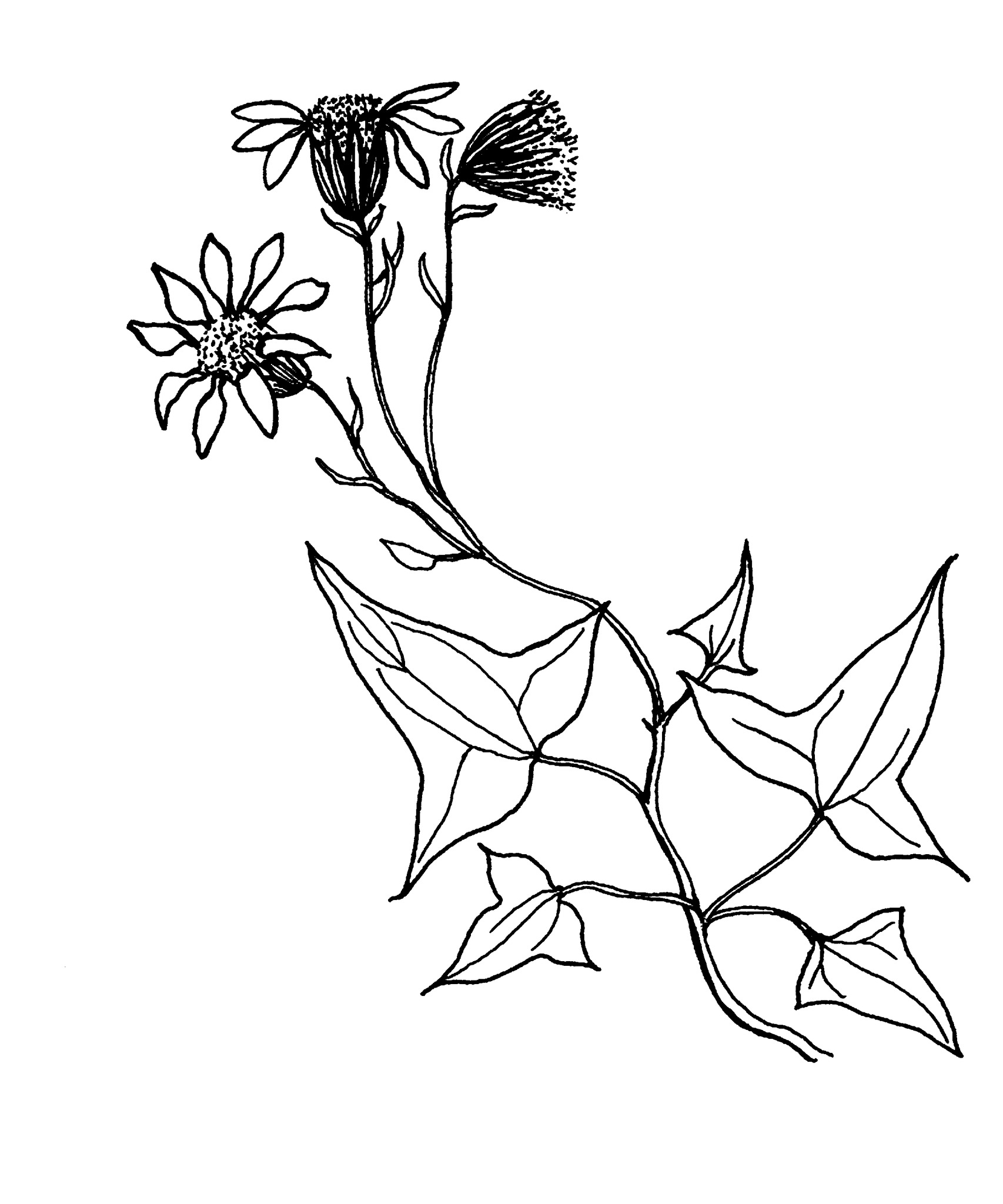
Latin senex — an old man, an allusion to the white- or grey-hairy pappus, which resembles an old man’s beard.
Annual or perennial herbs, shrubs or small trees, rarely climbers, glabrous to hairy. Stems variable. Leaves basal and/or along stems, alternate, margins entire to variously divided, sessile or petiolate. Capitula radiate or diskoid, terminal, usually in corymbs, rarely solitary, with stalks. Involucral bracts usually in 1 row, equal, short bracts often present below involucre. Receptacle flat. Ray florets usually female, often ligulate, yellow, rarely purple or white. Disk florets bisexual, tubular, usually yellow. Achenes cylindrical, ribbed, hairy or glabrous. Pappus of simple or barbed bristles.
About 10 species have become naturalised in Australia; some are troublesome weeds. S. viravira Hieron. from Argentina is a small white-hairy shrub with divided leaves that have linear segments, diskoid capitula to 7 mm across in open corymbs and florets that are white, yellow or pink.
A number of succulent species with diskoid capitula are sometimes grown as ornamentals: S. articulatus (L. f.) Sch. Bip., Candle Plant, Hot-dog Cactus, from South Africa, a small shrub with fleshy jointed stems, flat divided leaves with 3-5 irregular leaflets, capitula to 1.5 cm across and white florets; S. haworthii (Sw.) Steud., Cocoon Plant, from S Africa, a small shrub with fleshy stems, more or less cylindrical fleshy leaves, capitula to 2 cm across and orange or yellow florets; S. herreanus Dinter [S. herreianus] from Namibia, a prostrate or ascending herb with almost spherical, fleshy leaves, small capitula and white florets; S. radicans (L. f.) Sch. Bip., Creeping Berries, from S Africa, a prostrate herb with almost spherical to cylindrical, fleshy leaves, small capitula and white florets with yellow or mauve anthers; and S. rowleyanus Jacobsen, String-of-beads, from Namibia, a prostrate herb with almost spherical, fleshy leaves, capitula to 1 cm across and white florets with mauve anthers.
Involucral bracts equal and in 1 row, often with some smaller bracts below.
About 1500 species (arguably the largest genus of flowering plants) from most parts of the world, including Australia, which has about 50 native species.
Nordenstrom (1978).
Source: (2002). Dahlia. In: . Horticultural Flora of South-eastern Australia. Volume 4. Flowering plants. Dicotyledons. Part 3. The identification of garden and cultivated plants. University of New South Wales Press.
